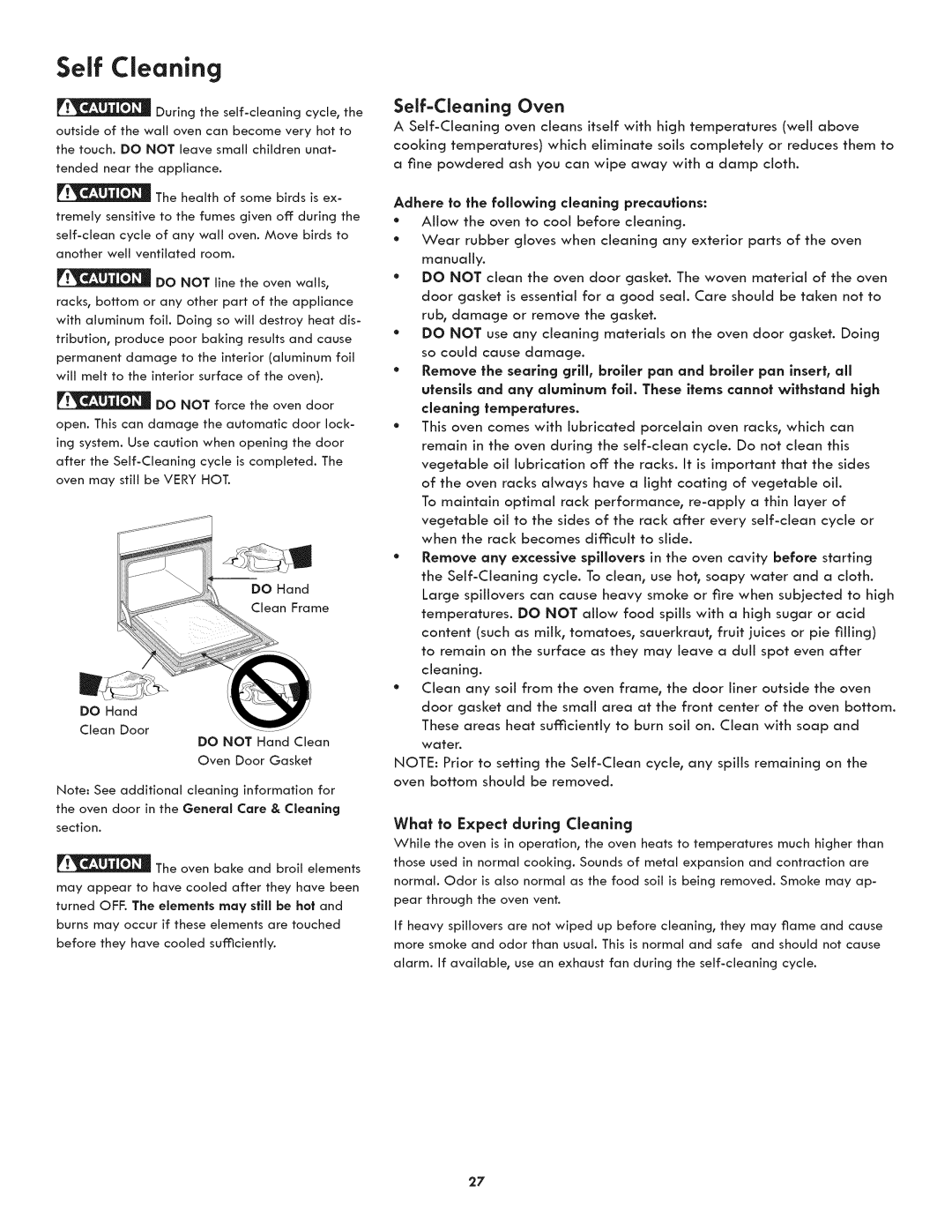790.4808, 790.4807, 790.4809 specifications
The Kenmore 790.4809, 790.4807, and 790.4808 are part of Kenmore's renowned lineup of kitchen appliances, known for their durability and advanced performance features. These models represent a blend of innovation and user-centric design, making them suitable for both culinary enthusiasts and everyday cooks.One of the standout features of these Kenmore ranges is their powerful cooking capabilities, highlighted by their high-efficiency burners. The models are equipped with multiple burner sizes, allowing users to match the heat output to their cooking needs, whether they are simmering sauces or boiling water rapidly. The precise temperature control ensures consistent cooking results every time.
In addition to their burner configurations, these models also boast an impressive oven capacity. With ample space, they can accommodate multiple dishes, making them ideal for family gatherings or meal prepping. The ovens feature advanced baking technologies, such as convection cooking, which circulates hot air for even cooking and browning. This feature enhances the quality of baked goods, from pastries to casseroles.
The Kenmore 790 series emphasizes user convenience with its digital controls and intuitive interface. They feature easy-to-read LED displays and simple touchpad controls, allowing users to set cooking times and temperatures effortlessly. An integrated timer and delay start function provide additional flexibility for busy households.
Cleaning is made easier with the self-cleaning function, which uses high temperatures to burn off residues, saving time and effort after a cooking session. The smooth, black stainless steel finish not only adds a modern aesthetic but also resists fingerprints and smudges, maintaining a sleek look with minimal maintenance.
Safety is also prioritized in these models. Features such as the oven lock and automatic shut-off provide peace of mind for users, especially in homes with children. Additionally, the tempered glass oven doors allow users to monitor their cooking without releasing valuable heat.
Overall, the Kenmore 790.4809, 790.4807, and 790.4808 models are designed to cater to a wide range of cooking styles, combining innovation, performance, and safety. Whether you're baking, broiling, or simmering, these ranges stand out as reliable partners in the kitchen, making meal preparation a seamless and enjoyable experience.

